After a two-hiatus due to conflicting schedules, Max and I returned to our weekly lessons last night. Last night's lesson focused on transitions and leg yields (naturally!).
For transitions, the emphasis was on canter-halts and canter-walks and these are not easy. The toughest part is that it's a lot easier to come to a complete halt than it is to drop down into a forward walk, especially since you are also trying to remain balanced and keep the horse's energy up by keeping your legs on.
We also worked on better integrating the half-halt into these maneuvers. Not only does the half-halt slow the horse down, but it also warns them that they need to be paying attention because "something's coming up". Without it, canter-halts and walks tend to be sharp and abrupt with the horse balancing on the fore-end. The whole idea is to keep the horse balanced, especially on the haunches.
I definitely need to work on my half-halts because my tendency is to keep the pressure on rather than distinctly releasing the bit- it's sort of like driving a car with both the brakes and accelerator on at the same time. The trick is to use a combination of breath pushing down the diaphragm with a slight kicking up with the legs and a brief tightening on the bit. Everything has to be coordinated so that the horse feels a distinct action from you- basically communication.
For me, half-halts tend to work better at the walk and trot. At the canter, it's a bit more tough, especially when you want to slow down the canter. I tend to either not apply enough pressure or way too much resulting in a halt or dropping out of the canter.
Leg yielding went pretty good although I need to make my left leg work harder. Here, like in a lot of riding maneuvers, one had to keep their weight behind the vertical (i.e. lean a bit to the rear). The normal tendency is to lean forward, especially when using the breath control with the half-halt. It all comes down to controlling the various parts of the body independently from ear other.
It looks like I've got some homework to do and this will come in handy on all sorts of places- trail riding AND parades.
For transitions, the emphasis was on canter-halts and canter-walks and these are not easy. The toughest part is that it's a lot easier to come to a complete halt than it is to drop down into a forward walk, especially since you are also trying to remain balanced and keep the horse's energy up by keeping your legs on.
We also worked on better integrating the half-halt into these maneuvers. Not only does the half-halt slow the horse down, but it also warns them that they need to be paying attention because "something's coming up". Without it, canter-halts and walks tend to be sharp and abrupt with the horse balancing on the fore-end. The whole idea is to keep the horse balanced, especially on the haunches.
I definitely need to work on my half-halts because my tendency is to keep the pressure on rather than distinctly releasing the bit- it's sort of like driving a car with both the brakes and accelerator on at the same time. The trick is to use a combination of breath pushing down the diaphragm with a slight kicking up with the legs and a brief tightening on the bit. Everything has to be coordinated so that the horse feels a distinct action from you- basically communication.
For me, half-halts tend to work better at the walk and trot. At the canter, it's a bit more tough, especially when you want to slow down the canter. I tend to either not apply enough pressure or way too much resulting in a halt or dropping out of the canter.
Leg yielding went pretty good although I need to make my left leg work harder. Here, like in a lot of riding maneuvers, one had to keep their weight behind the vertical (i.e. lean a bit to the rear). The normal tendency is to lean forward, especially when using the breath control with the half-halt. It all comes down to controlling the various parts of the body independently from ear other.
It looks like I've got some homework to do and this will come in handy on all sorts of places- trail riding AND parades.




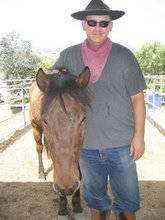
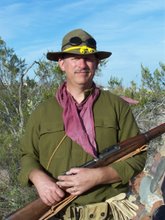
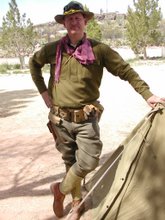
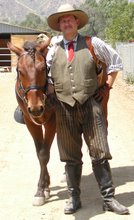
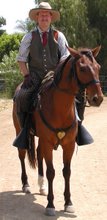

No comments:
Post a Comment